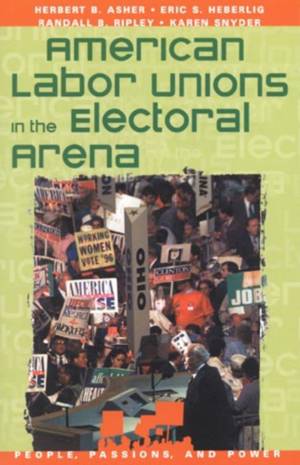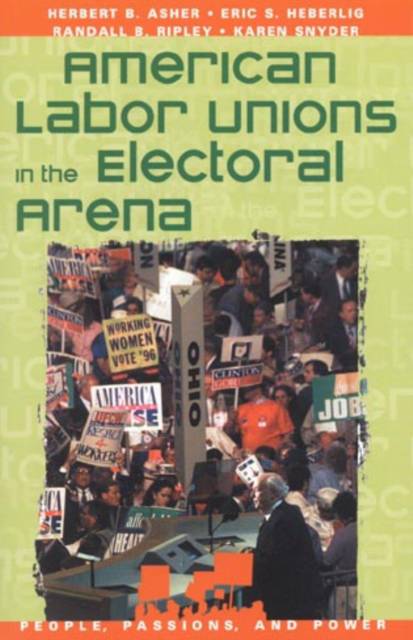
- Afhalen na 1 uur in een winkel met voorraad
- Gratis thuislevering in België vanaf € 30
- Ruim aanbod met 7 miljoen producten
- Afhalen na 1 uur in een winkel met voorraad
- Gratis thuislevering in België vanaf € 30
- Ruim aanbod met 7 miljoen producten
Zoeken
American Labor Unions in the Electoral Arena
Herbert B Asher, Eric S Heberlig, Randall B Ripley, Karen Snyder
€ 44,95
+ 89 punten
Uitvoering
Omschrijving
Are contemporary U.S. labor unions irrelevant, or in fact a changing force to be reckoned with as they grow into a new economy in a globalized America? Is the current political power exercised by U.S. labor unions more akin to the social movements of the sixties or the interest politics of the nineties? After winning the presidency of the AFL-CIO in 1995, John Sweeney and his colleagues have taken strides to make labor more important in the United States economically and politically, despite reduced membership. Here, four authors come together to survey the status of labor unions past, present, and future, nationally as well as through the microcosm of the labor situation in Ohio, one of the largest, most representative, and most electorally significant states in the country.
The authors focus on union membership, leadership, political attitudes, strategies, and grassroots mobilization to paint a picture of union revitalization in a context of economic and social change. American labor still wields clout on Election Day, but union revitalization is a work in progress. For unions to matter every day to their members and leaders, they must consolidate their economic bases and rise to the challenges carefully documented in this book.
The authors focus on union membership, leadership, political attitudes, strategies, and grassroots mobilization to paint a picture of union revitalization in a context of economic and social change. American labor still wields clout on Election Day, but union revitalization is a work in progress. For unions to matter every day to their members and leaders, they must consolidate their economic bases and rise to the challenges carefully documented in this book.
Specificaties
Betrokkenen
- Auteur(s):
- Uitgeverij:
Inhoud
- Aantal bladzijden:
- 224
- Taal:
- Engels
- Reeks:
Eigenschappen
- Productcode (EAN):
- 9780847688661
- Verschijningsdatum:
- 18/04/2001
- Uitvoering:
- Paperback
- Formaat:
- Trade paperback (VS)
- Afmetingen:
- 149 mm x 228 mm
- Gewicht:
- 294 g

Alleen bij Standaard Boekhandel
+ 89 punten op je klantenkaart van Standaard Boekhandel
Beoordelingen
We publiceren alleen reviews die voldoen aan de voorwaarden voor reviews. Bekijk onze voorwaarden voor reviews.











